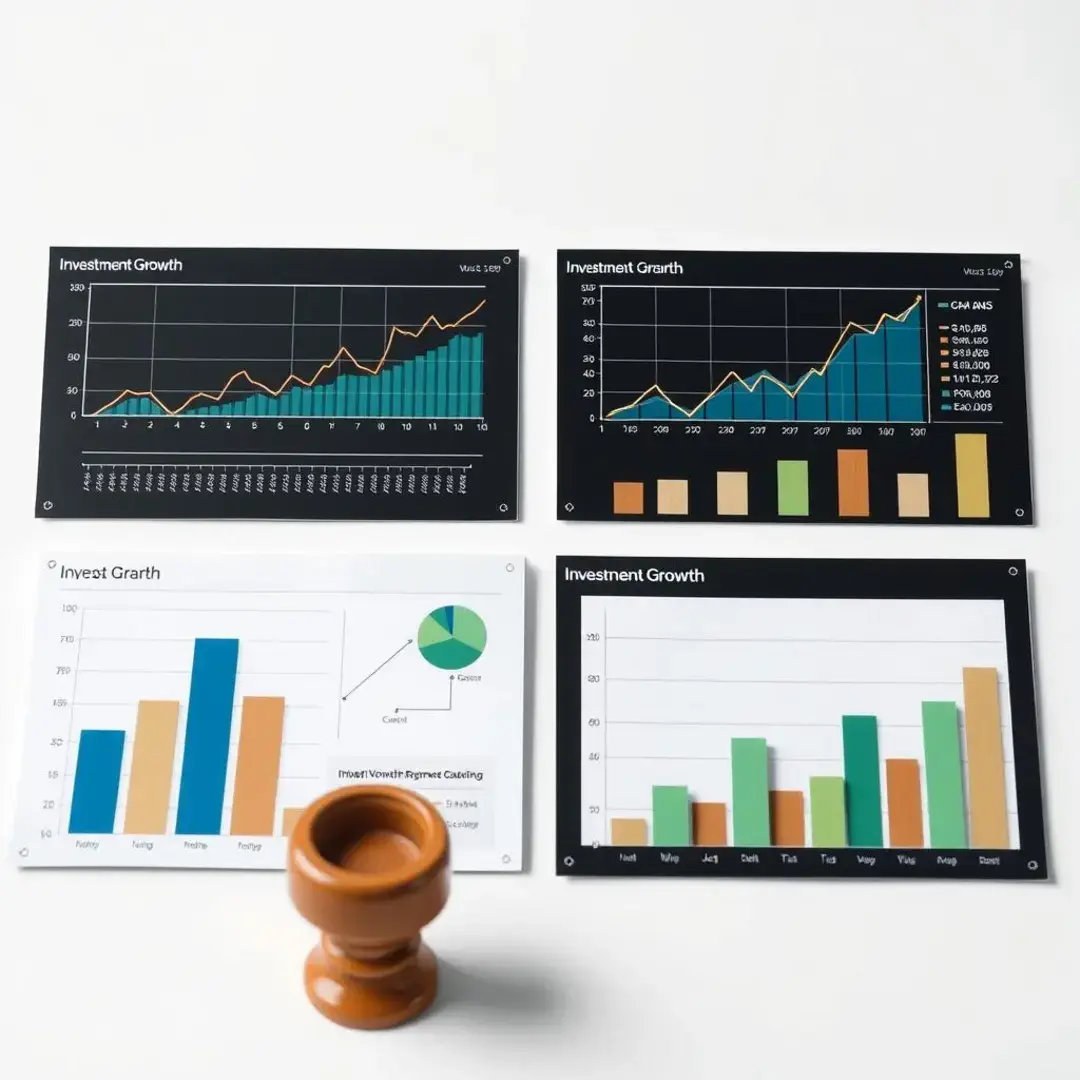Annualized Rate of Return: Investment Performance
Understanding the Annualized Rate of Return

What is Annualized Rate of Return?
The annualized rate of return (ARR) is a measure that allows investors to evaluate the performance of their investments over a specific period, normalized to a one-year timeframe. This metric provides a way to compare returns from different investments, regardless of the time they were held. Essentially, it represents the average annual return, which an investment would have generated if it had grown at the same rate every year. Understanding ARR is essential for both new and seasoned investors aiming to make informed decisions in capital markets.
Investors rely heavily on the annualized rate of return to gauge how well their investments are doing over time. It allows for straightforward comparisons between various investment vehicles, such as stocks, bonds, and mutual funds. By analyzing ARR, one can assess whether an investment meets personal financial goals, making it a critical tool in an investor’s arsenal. Furthermore, it facilitates better forecasting and planning for future financial commitments and needs.
Different Methods of Calculating Annualized Return
The simple average return is calculated by summing annual returns and dividing by the number of years. While this method is straightforward, it can mislead investors about the actual performance due to its failure to account for the effect of compounding. On the other hand, the compound annual growth rate (CAGR) captures the effects of growth over time, revealing a more accurate picture of an investment’s performance. This can significantly influence decision-making, making CAGR a preferred method for serious investors seeking comprehensive insights into their long-term investments.
The TWRR is particularly useful for assessing the performance of investment managers, as it eliminates the impact of cash inflows and outflows. This method provides a clearer picture of how well the investment has performed over time. Conversely, MWRR, or the internal rate of return, accounts for the timing and size of cash flows, making it more reflective of an investor’s experience. Both methods serve distinct purposes, and understanding their differences can greatly enhance investment analysis.
Investors often encounter situations where returns must be annualized for periods of less than a year, such as quarterly or monthly returns. In these cases, annualization involves scaling the period returns to reflect an annual figure. A common formula is to take the periodic return, adjust it by multiplying by the number of periods in a year. This approach provides a more uniform basis for comparison across differing investment horizons, making it an invaluable tool in practical finance.
Applying Annualized Rate of Return in Investment Analysis

Comparing Investment Performance Across Different Time Horizons
When evaluating investment performance, understanding the difference between short-term and long-term investments is crucial. Short-term investments, such as trading stocks, can exhibit significant volatility and rapid price fluctuations, whereas long-term investments typically smooth these fluctuations due to market behaviors. By applying the annualized rate of return, investors can assess which strategies work best for their goals, depending on their personal risk tolerance and investment horizon.
Incorporating annualized rates of return allows investors to adjust comparisons across varying investment periods easily. For example, one might want to compare a one-year investment with a ten-year investment. By normalizing returns to an annual basis, investors can objectively analyze which investment provides a better return on investment (ROI). This approach not only facilitates better decision-making but also empowers investors to strategically allocate assets across their portfolios.
Using Annualized Return to Assess Portfolio Performance
In the world of investments, benchmarking is a vital practice that assesses an investment’s return against relevant market indices. By comparing annualized returns to indices, investors can measure relative performance, helping them understand whether their investments are beating the market. This provides a clearer perspective, allowing investors to decide whether to hold or modify their portfolio to pursue better opportunities.
Additionally, the annualized rate of return aids in assessing individual asset performance within a portfolio. Investors can pinpoint which assets contribute positively to their overall performance and which underperform. This knowledge enables a more informed strategy in asset allocation and can promote reactive decisions, aligning investment choices with market opportunities or challenges that may arise.
The Limitations of Annualized Return
Despite the utility of the annualized rate of return, it is vital to acknowledge its limitations, particularly regarding volatility and risk. ARR can sometimes provide an overly optimistic picture, as it does not factor in the potential for dramatic price fluctuations that occur over time. As a result, investors should not rely solely on ARR to gauge risk, but rather, consider the investment’s full risk profile to make more calculated decisions.
Inflation is another critical factor that can distort the perceived effectiveness of the annualized rate of return. While an investment may display a high nominal annualized return, adjusting for inflation often reveals a significantly lower or even negative real return. It is crucial for investors to account for inflation when evaluating their results to achieve a more accurate understanding of their purchasing power and financial growth.
The external economic landscape can also influence the effectiveness of using the annualized rate of return. Market conditions, interest rates, and regulatory changes can yield unpredictable results, making ARR alone insufficient for comprehensive investment assessments. This underscores the importance of adopting a holistic investment approach that considers a multitude of factors beyond just historical rates of return.
Advanced Applications of Annualized Rate of Return

Incorporating Annualized Return into Portfolio Optimization Strategies
Advanced investors often utilize risk-adjusted return metrics, such as the Sharpe and Sortino ratios, to further optimize their portfolios. These metrics consider annualized returns in relation to the inherent risk of the investments, offering a more nuanced understanding of performance. By recognizing how much return is generated for each unit of risk, investors can refine their strategies to maximize returns while managing potential downsides effectively.
Dynamic asset allocation, driven by annualized performance metrics, allows investors to adapt their portfolio strategies in response to changing market conditions. Regularly revisiting annualized returns enables investors to identify underperforming assets and reallocate their investments accordingly. This proactive approach helps in managing investment risk and enhances the probability of achieving financial goals over time in an ever-evolving market landscape.
Forecasting Future Investment Performance Using Historical Annualized Returns
Investment forecasting techniques often employ historical annualized returns, applying regression analysis and predictive modeling to estimate potential future performance. By examining patterns in past performance data, investors can gain insights into how investments might behave under similar future conditions. This analytical approach provides a rigorous framework for investment decision-making, helping to reduce uncertainty and risk in future projections.
However, it’s essential to recognize the inherent limitations of relying solely on historical data for forecasts. Markets are influenced by myriad factors that are not always predictable based solely on past performance. Therefore, while historical annualized returns can contribute valuable insights, they should be used in conjunction with other analytical methods and current market conditions to inform investment judgments accurately.
Annualized Return in Alternative Investments
In the realms of private equity and venture capital, the annualized rate of return holds particular significance. Various alternative investments lack the liquidity and transparency of traditional assets, making ARR a valuable indicator for evaluating performance over extended periods. Investors in these sectors must be vigilant, as a solid understanding of ARR can help distinguish high-performing funds from those that fail to meet return expectations.
Similarly, in real estate and other illiquid investments, calculating and understanding the annualized rate of return can be pivotal. These investments often entail long holding periods and substantial capital commitments. By utilizing ARR, real estate investors can assess performance effectively and make strategic decisions regarding acquisition, development, or sale based on clarified return expectations.












